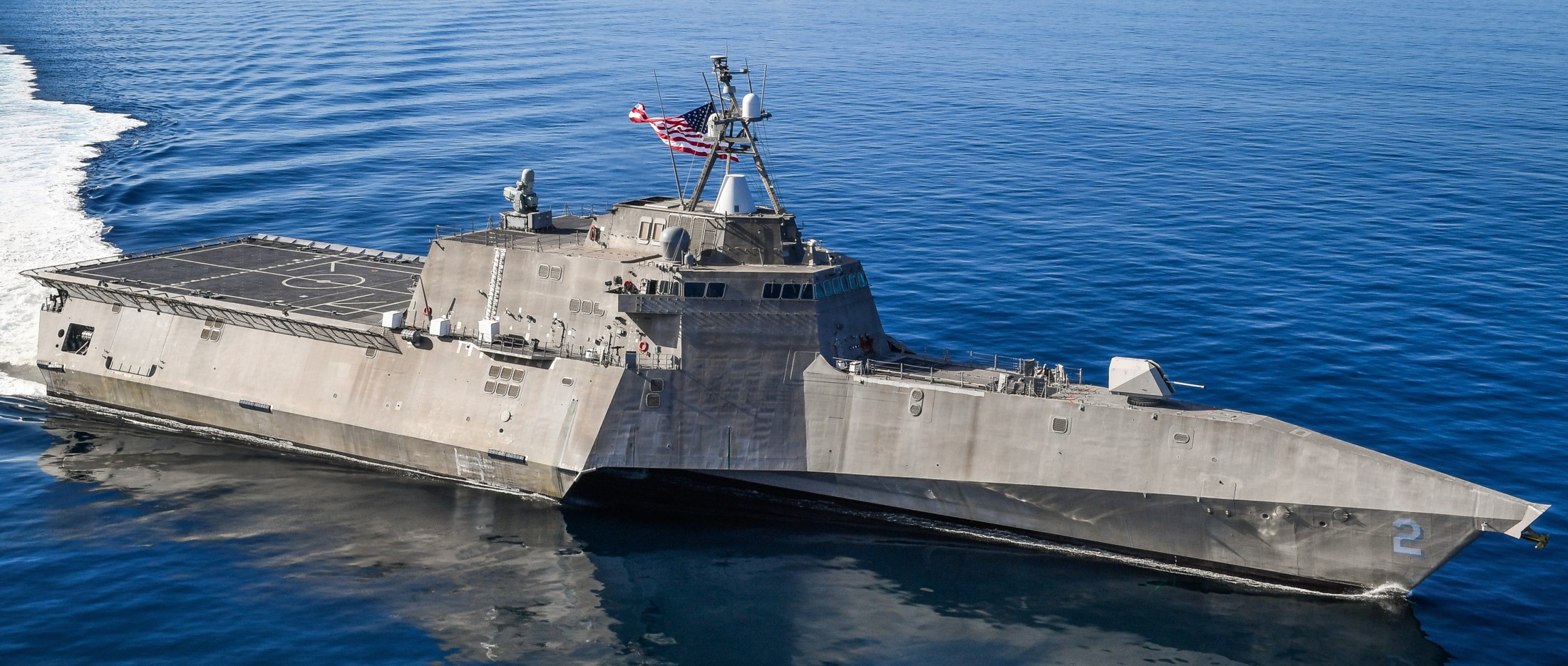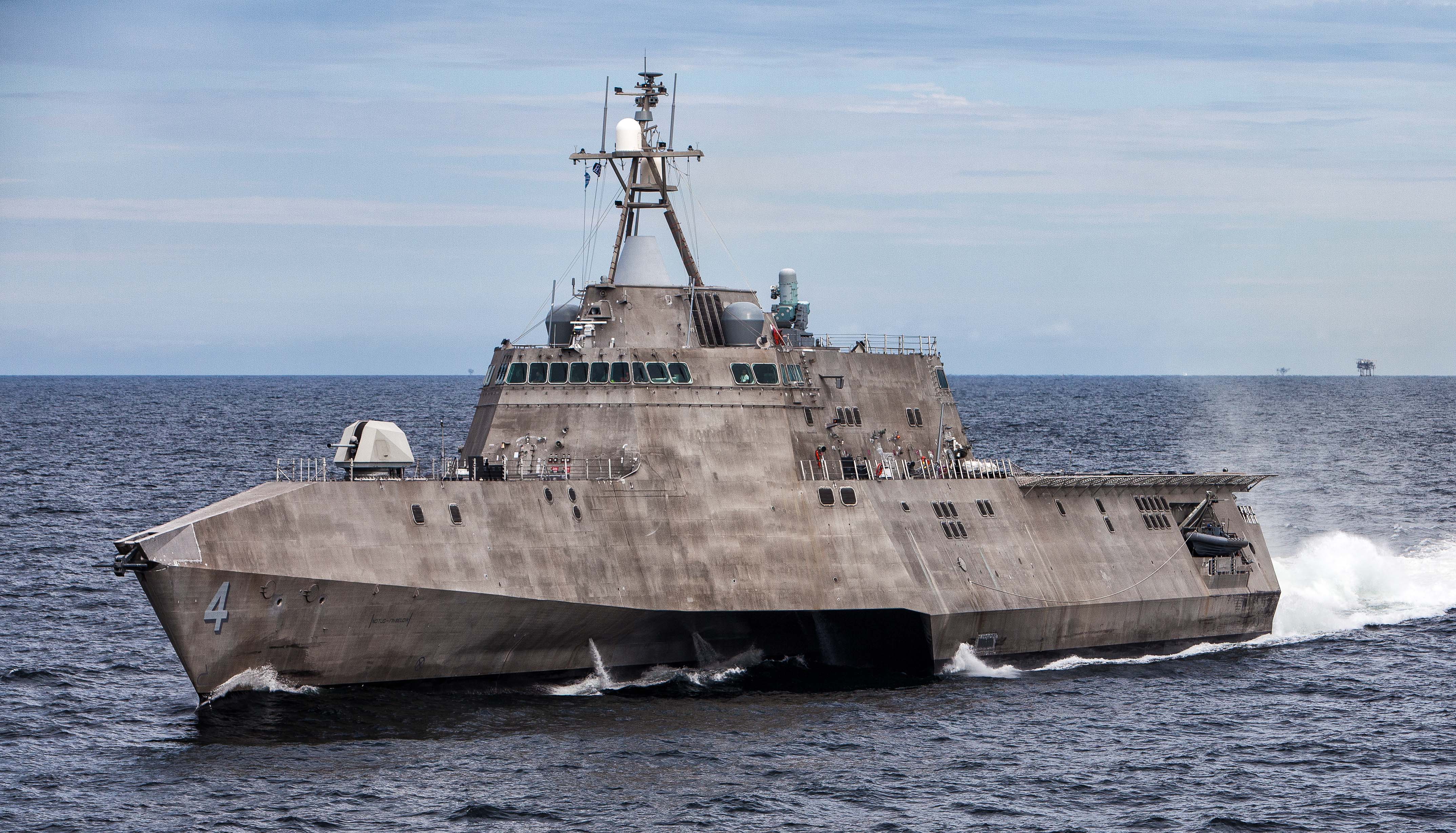Independence-class LCS – The Versatile Littoral Combat Ship of the US Navy
The Independence-class Littoral Combat Ship (LCS) is a revolutionary addition to the US Navy’s fleet, designed to operate in shallow coastal waters and tackle a wide range of missions. Manufactured by Austal USA, this ship class combines speed, flexibility, and advanced technology to meet the evolving challenges of modern naval warfare.
The need for a new breed of littoral combat ships arose in the early 2000s as the US Navy recognized the significance of coastal regions in contemporary military operations. Traditional warships were often too large and cumbersome to effectively operate in these confined and shallow waters. To address this, the Navy initiated the Littoral Combat Ship program in 2002, intending to procure a versatile, modular, and cost-effective vessel suitable for various missions, including anti-submarine warfare, mine countermeasures, surface warfare, and intelligence gathering.
Austal USA was selected as one of the two prime contractors to build the LCS, alongside Lockheed Martin’s Freedom-class. The Independence-class, led by Austal USA, features a trimaran hull design, offering increased stability and speed compared to traditional monohull vessels. This innovative design has proven to be highly successful, allowing the Independence-class LCS to excel in littoral environments.
Trimaran Hull Design: The trimaran hull enhances stability, speed, and fuel efficiency, ensuring optimal performance in challenging littoral waters. This design also provides ample space for mission modules, allowing the LCS to be rapidly reconfigured to meet various mission requirements.
Modularity: One of the key strengths of the Independence-class LCS is its modular design. The ship can be quickly equipped with mission packages tailored to specific tasks, such as anti-submarine warfare, mine countermeasures, surface warfare, or intelligence gathering. This adaptability makes the LCS a highly versatile platform.
High Speed and Agility: With a top speed exceeding 40 knots, the Independence-class LCS can swiftly respond to emerging threats and rapidly reposition within littoral regions. This speed advantage enables the ship to maintain a significant operational tempo while ensuring the safety of its crew.
Advanced Mission Systems: Equipped with state-of-the-art sensors, radars, and weapon systems, the LCS ensures comprehensive situational awareness and formidable offensive capabilities. Integrated mission systems and data sharing enhance the ship’s effectiveness in collaborative operations.
Since its introduction, the Independence-class LCS has seen active service across various theaters, including the Pacific, Atlantic, and the Middle East. These ships have demonstrated their versatility and effectiveness in a wide range of missions, from maritime security operations to humanitarian assistance and disaster relief efforts.
Like any complex military program, the LCS faced criticism and challenges during its development and early operational stages. Concerns were raised regarding the ship’s survivability and the need for additional armor. In response, ongoing efforts have been made to enhance the LCS’s survivability and lethality. These include improved armor protection, updated countermeasures, and enhanced mission packages.
The Independence-class LCS has proven to be a valuable addition to the US Navy’s fleet, showcasing the benefits of a modular, trimaran-hulled littoral combat ship. With its ability to operate in shallow coastal waters and adapt to various mission profiles, the Independence-class LCS remains a vital component of the Navy’s maritime capabilities, safeguarding national interests and contributing to global security in an ever-evolving maritime environment.
Hits: 0









